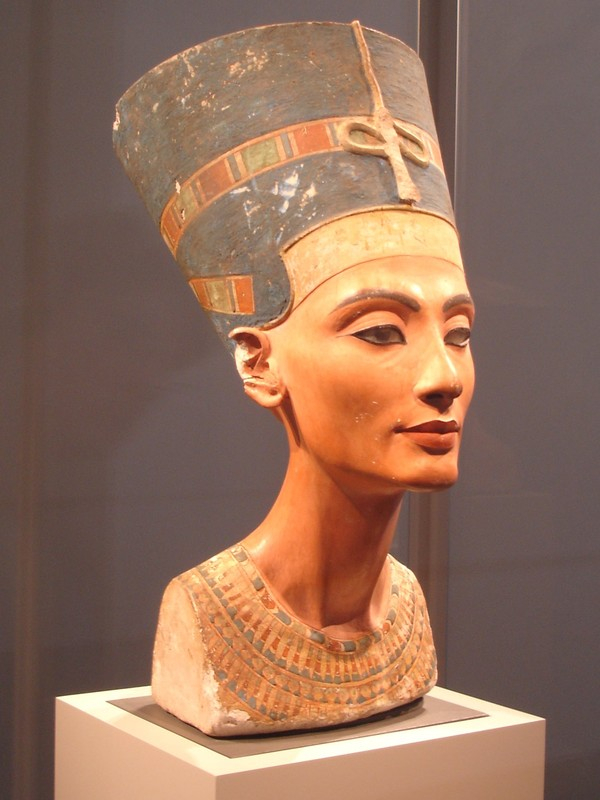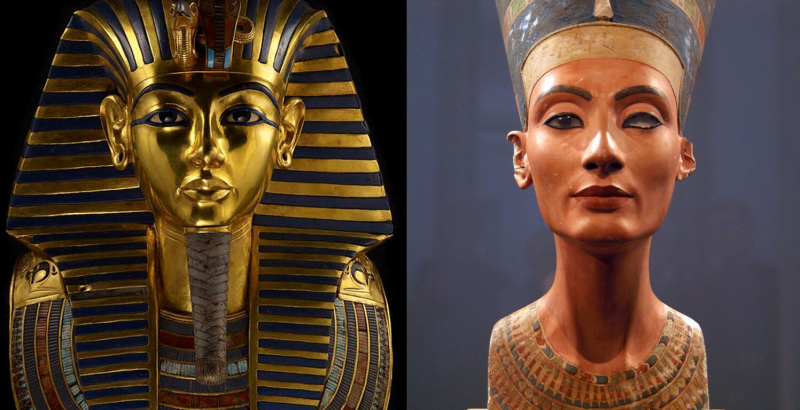Nefertiti
Nefertiti, who was born in 1370 BC in Thebes, was a superb leader. She claimed to be the daughter of Ay and his wife Tey, even though her royal ancestry cannot be confirmed. They were never identified as her parents in any citations, though. She then married the emperor and bore him six daughters, becoming his regal spouse. The antique photographs show that she led her husband in worshipping the sun god.
The famously beautiful Nefertiti was the wife of the Egyptian pharaoh Akhenaten. "The beautiful one has come," her name signifies. She gained notoriety for her painted sandstone bust, which is now on display at the Neues Museum in Berlin. She reigned with her husband when ancient Egypt was at its richest. She and her husband put forth a lot of effort to start the Aten religion in Egypt. Before Nefertiti and Akhenaten's religious revolution, Egyptians practiced polytheism (worshipping several gods), but they were forced to convert to the worship of Aten the Sun God. Nefertiti was portrayed by Akhenaten as an equal partner. She was maybe one of the most dominant female figures in Egyptian history.
She demonstrated her outstanding leadership abilities during co-regency with the Pharaoh of ancient Egypt after the death of her husband. She held several titles, including Hereditary Princess, Lady of Grace, and Sweet of Love. In 1330 BC, she finally committed suicide in response to her daughter's passing.
Born in: 1370 BC












